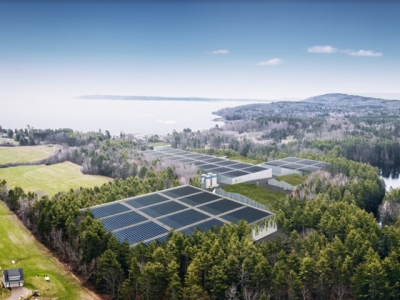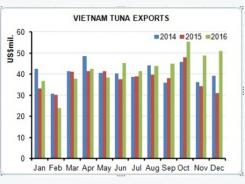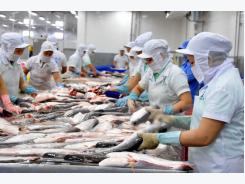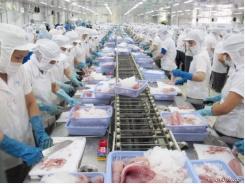Aquaculture Frontiers, part 1: Can RAS Turbocharge Aquaculture?

RAS: From money drain to savior
Recirculating aquaculture systems are going mainstream
Published on Oct. 22, 2018, Can RAS Turbocharge Aquaculture? is our series' first chapter.
Long considered a sure way to lose money, RAS might just be the fastest growing segment in the aquaculture industry right now.
Norway’s salmon farmers, amid an escalating sea lice problem, are building massive new hatcheries and spending hundreds of millions to put bigger smolt in the sea and short ocean cycles. Some innovators have taken RAS advancements a step further and plan to grow harvest size salmon in RAS.
Atlantic Sapphire, a leader of this movement, has the backing of several major banks and is embarked on an audacious, multi-stage project to supply a massive 90,000 metric tons a year from a state-of-the-art facility near Miami. Nordic Aquafarms and Whole Oceans plan two mega-farms in the state of Miami, close to major consumption centers in Boston and New York. The successful execution of Atlantic Sapphire could unlock the vaults to major new sources of finances for RAS grow-out facilities.
Globally, a RAS evolution is well underway, as the technology has been proven at many levels. RAS has the potential to revive major and once-lived species that have become almost extinct, from Atlantic halibut to beluga sturgeon.
This first report, 39 pages long, includes:
- How Norway’s salmon industry is revolutionizing the RAS industry
- How Atlantic Sapphire’s success is key for other players to get finance
- How Russia is turning to RAS to revive its once grand caviar industry (we visited one major facility in Transnistria to find out more)
- Insights from speaking with major players in the Chinese RAS industry
- Insight from turnkey RAS suppliers including Billund Aquaculture and Pentair
- A visit to the Freshwater Institute in West Virginia and the sites of the future salmon megafarms in Maine to provide first-hand information
- Information from industry conferences, from AquaNor and AquaSur to the Seafood Expo North America
- Interviews with dozens of salmon farmers, RAS specialists, academics, scientists and entrepreneurs
Recirculating aquaculture technology is being used to revive species in decline and improve smolt farming. The next evolutionary step is salmon mega-farms. Learn how RAS farming is going mainstream.
REPORT SCOPE
Matt Craze spent a year researching the current global state of the recirculating aquaculture systems (RAS) industry starting at the 2017 Aquanor show in Trondheim, Norway after getting curious about their impact on salmon industry. This research has taken him to West Virginia to learn about the work carried out by the Freshwater Institute, and the sites of the future landbased salmon farms in Maine. More recently, Matt visited Camanchaca’s state-of-the-art RAS smolt facility in southern Chile. Matt interviewed dozens of executives involved in the RAS industry and analyzed the return of investment models and operating cost structures of these systems versus traditional open pen aquaculture. Larisa Culeac studied a growing trend in Russia and neighboring countries to raise sturgeon in RAS tanks and revive the caviar industry that has been decimated from overfishing in the Black and Caspian seas.
CONTENTS
Grow out RAS – many failures, but a growing success rate
RAS has the potential to diversify seafood supply globally. But it needs to overcome a past chequered with spectacular failures. We analyze where grow-out RAS has worked, and where it has succumbed to biological and budgeting failures
Side glance: The United States. As Alaska’s great fisheries decline and pen farming could be phased out, giant RAS salmon farms emerge on the East Coast
Side glance: Russia: rebuilding the caviar industry using aquaculture and RAS technology
Salmon’s RAS smolt revolution: improving costs, health and reliability Salmones Camanchaca first built a RAS farm to raise salmon from eggs to smolt back in 2001. Although slow to take off, the industry is now rapidly migrating to RAS technology to phase out out-dated ‘flow-through’ hatcheries.
RAS Economics: winning over skeptical bankers
Some of the biggest RAS failures have involved poor financial planning more than biological failure. RAS operating costs can often be cheaper, but the requirement of heavy start-up capital and a prolonged period between investment and first revenue requires executives who are fluent in finance. We assess the industry’s ability to contend with the complex return on investment models.
RAS Technology: technological advancements that could increase predictability
We will look at the efforts being made to improve RAS operations and companies that are working on R&D efforts to make the technology more predictable and more affordable.
RAS in Asia: after a slow start, fast to scale?
We analyse why Asia has been slow to respond to the RAS boom. We look at efforts being made in China and elsewhere to adopt RAS technology and how it could scale quickly.
EXECUTIVE SUMMARY
Recirculating aquaculture technology (RAS) is going mainstream.
During the past two years, the aquaculture industry collectively shook its head in disbelief as a group of Norwegian entrepreneurs turned a utopian vision of a giant salmon farm in tropical Miami into reality. Atlantic Sapphire is the talk of the town, and it’s listed on the Oslo Bors.
With Atlantic Sapphire under construction, two other companies announced major RAS salmon farms in the state of Maine this year, starting what could be deemed as a landbased revolution in the United States. Outside of salmon, innovators are raising other species in a RAS environment. Kingfish Zeeland, a Dutch firm, is successfully farming tropical yellowtail fish at a site near the North Sea. Hudson Valley Fish Farms started a steelhead trout farm, just a short drive from New York City.
“That’s the beauty of recirculating aquaculture systems (RAS),” said Steve Eddy, the director of the University of Maine’s Center for Cooperative Aquaculture (CCAR). “You can grow anything, anywhere.
” The US-based RAS announcements came in a year when Washington governor Jay Inslee said the state would phase out salmon farming following the pen collapse of Cooke Aquaculture last year, effectively ending the activity in the United States. Wild salmon captures from Alaska and Canada also plummeted in 2018, making the world’s largest salmon importer more dependent on Chilean and Norwegian imports than ever. Meanwhile, US salmon demand is growing at double digits, and the massive Chinese market is just waking up to the taste of Atlantic salmon.
RAS is already a major business. The industry started off in the 1980s as a group of intrepid Danish innovators started eel farms using technology similar to that used in a swimming pool, with a recirculating water system. A pivotal moment occurred when the salmon industry realized that RAS could significantly improve processes used in their smolt hatcheries. Salmones Camanchaca became a pioneer in 2001 when it built its first ever hatchery using RAS technology in southern Chile.
Now, the conventional salmon farming industry is adopting RAS technology at a frenetic rate. Major providers of turnkey RAS systems, such as Norway’s AKVA Group and Denmark’s BillundAquakulturservice A/S, have sizeable project pipelines and are reporting double digit growth in the sector as they cater to the salmon industry.
Converting a salmon hatchery from a traditional flowthrough system to RAS reduces variability and better prepares fish for their life at sea, said Hugo Cajas, head of freshwater for Chilean producer Salmones Camanchaca. It can also significantly reduce the time that fish spend in coastal pens, effectively freeing up that seawater capacity for more cycles, according to Grieg Seafood ASA.
EXECUTIVE SUMMARY
About a third of Norway’s salmon industry has now been converted to RAS, while Chile lags behind at about 15%, Cajas said.
Grieg is building a major RAS facility in Norway’s Finnmarkregion, in what is the currently the company’s largest investment at NOK 750 million (USD 90 million). That will permit the Norwegian company to grow smolt weighing 500 grams by 2020, compared with 150 grams in 2017 and 90 grams. Many major companies are planning similar investments.
But the full capabilities of RAS extend far beyond salmon, said Steve Summerfelt, who has led research at the Freshwater Institute for the past two decades. Companies in Russia and neighboring countries have built RAS systems to revive the caviar industry, ravaged by over-fishing in the Black and Caspian seas.
Steve Eddy at the CCAR is attempting to restore dismally low Atlantic halibut stocks through RAS farming. In Asia, Gus Werner, one of the earliest employees of Danish RAS supplier Inter-Aqua, is growing sea cucumber in a multistorey RAS operation in Xiamen, China. He expects the technology to explode in China as the government starts to clamp down on the country’s many informal fish farms. The Middle East has been experimenting with RAS technology for many years using sovereign funds.
Summerfelt left the Freshwater Institute in June to join Superior Fresh, a massive aquaponics farm located in the Wisconsin countryside that harvested its first Atlantic salmon on July 4. Water from the so-called bluehouse where the Atlantic salmon are kept irrigates a 100,000 square-foot glasshouse of leafy greens before being pumped back to the fish again. This technology could revolutionize farming and food production systems in the United States, Summerfelt said.
“We are changing the world,” Summerfelt said. “RAS creates jobs in areas that need it and provides everyone with a healthy protein source.”
Despite these advancements, RAS technology is still under serious doubt because of a high failure rate among start-ups. The technology is still prone to biological and budgetary errors and the jury is still out whether RAS will go mainstream anytime soon, according to food industry lender Rabobank.
Biologically, operating a RAS farm requires highly skilled staff to avoid fatal human errors, according to Steve Summerfelt. A system such as the Superior Fresh bluehouse requires at least a “couple” of biology doctorates to avoid failure, he said. While these systems are effective at keeping pathogens out, once in, they can quite easily wipe out the entire population of a RAS farm.
This variability is gradually decreasing, said Brian Cantanzaro, aquaculture research center manager for US-based technology supplier Pentair. In the early days of RAS, skilled individuals would assemble different parts of equipment to make a RAS system. Now that situation has “flip-flopped” as the systems have become generic and surpass the knowledge of any one individual, he said. This in itself poses problems because it’s hard to find operators of the sophisticated equipment used in modern RAS systems, he said.
Also crucially important are service providers to the RAS space. The industry has attracted major companies such as French water company Veolia, which designs the biofilters that collect fish feces and recirculate fresh water back into the tanks. There are a host of other companies that supply oxygen, transport sludge, control pressure valves and other key steps. Energy utilization rates are still high and costly, making RAS prohibitively expensive in some parts of the world.
There is still much room for improvement in the standardization of technology, said KjetilHaga, an investor in RAS technology for Oslo-based investment Broodstock Capital Partners. The firm bought 51% of Billund last year and plans bolt-on acquisitions that can further optimize RAS systems, he said. “RAS is going to boom,” Haga predicts.
Perhaps the biggest challenge of all to operating a RAS grow-out farm is in the financial capability required to raise the large sums of capital needed and executing the project on time, and on budget. On paper, RAS is a no-brainer. RAS providescheaper operating costs than coastal pen farms because transport costs are close to zero, said Erik Heim, CEO of Nordic Aquafarms, which plans a major RAS salmon farm in Maine.
These Maine sites will pay less than ten cents per kiloto truck salmon to processing plants in the U.S. Northeast Corridor, by virtue of being close to Route 1 on the Atlantic Coast. By comparison, Chilean farmers pay more than $1 per kilo to truck fillets 641 miles from Puerto Montt to the Santiago’s airport, where they are loaded on overnight flights to Miami, according to Oscar Garay, the general manager of Chilean producer Salmones Magallanes.
The main challenge that the industry has is in the time required to get a payback on initial investments that exceed $50 million for a small project to hundreds of millions of dollars needed for a fully operational Atlantic Sapphire. Salmon in its three-year growth cycle takes significantly longer to harvest than other forms of protein such as chicken or pork. As such, innovators face difficulties in convincing banks to lend significant sums of capital on a technology that has yet to be proven at the mega-farm level, said Christian Olsen, an Oslo-based equity analyst at Kepler Chevreux. “It’s really hard for finance people to understand,” said Mike Velings, co-founder of aquaculture investment fund AquaSpark. “People are getting a better understanding of RAS economics, but not happening to understand how much capital is needed over X period of time is really dangerous.”
Investment appetite differs by continent. Scandinavia and especially Denmark has pioneered RAS and has had significant backing from financial institutions in the region. Other regions, notably Asia, have been much slower to respond to the opportunities that RAS presents, said Pentair’s Cantanzaro.
“Denmark is very open to financing projects and it’s easier to get to start a fish farm,” he said. “In the U.S. they probably couldn’t even pronounce aquaculture.”
RAS’s financing conundrum places a huge emphasis on the successful completion of projects such as Atlantic Sapphire, said RonStotish, CEO of AquaBounty Technology, which was the first land-based aquaculture company to go public globally.
“The first one is the most important,” said Stotish, in reference to the Atlantic Sapphire project. “That’s why we wish the other growers well. If we have a spectacular crash and burn, it will sour the investment community. We want them to be all successful.”
Related news
Tools

Phối trộn thức ăn chăn nuôi

Pha dung dịch thủy canh

Định mức cho tôm ăn

Phối trộn phân bón NPK

Xác định tỷ lệ tôm sống

Chuyển đổi đơn vị phân bón

Xác định công suất sục khí

Chuyển đổi đơn vị tôm

Tính diện tích nhà kính

Tính thể tích ao




 Shrimp exporters in Mekong Delta face challenges amid…
Shrimp exporters in Mekong Delta face challenges amid…  Covid-19 brings both challenges and opportunities to VN…
Covid-19 brings both challenges and opportunities to VN…